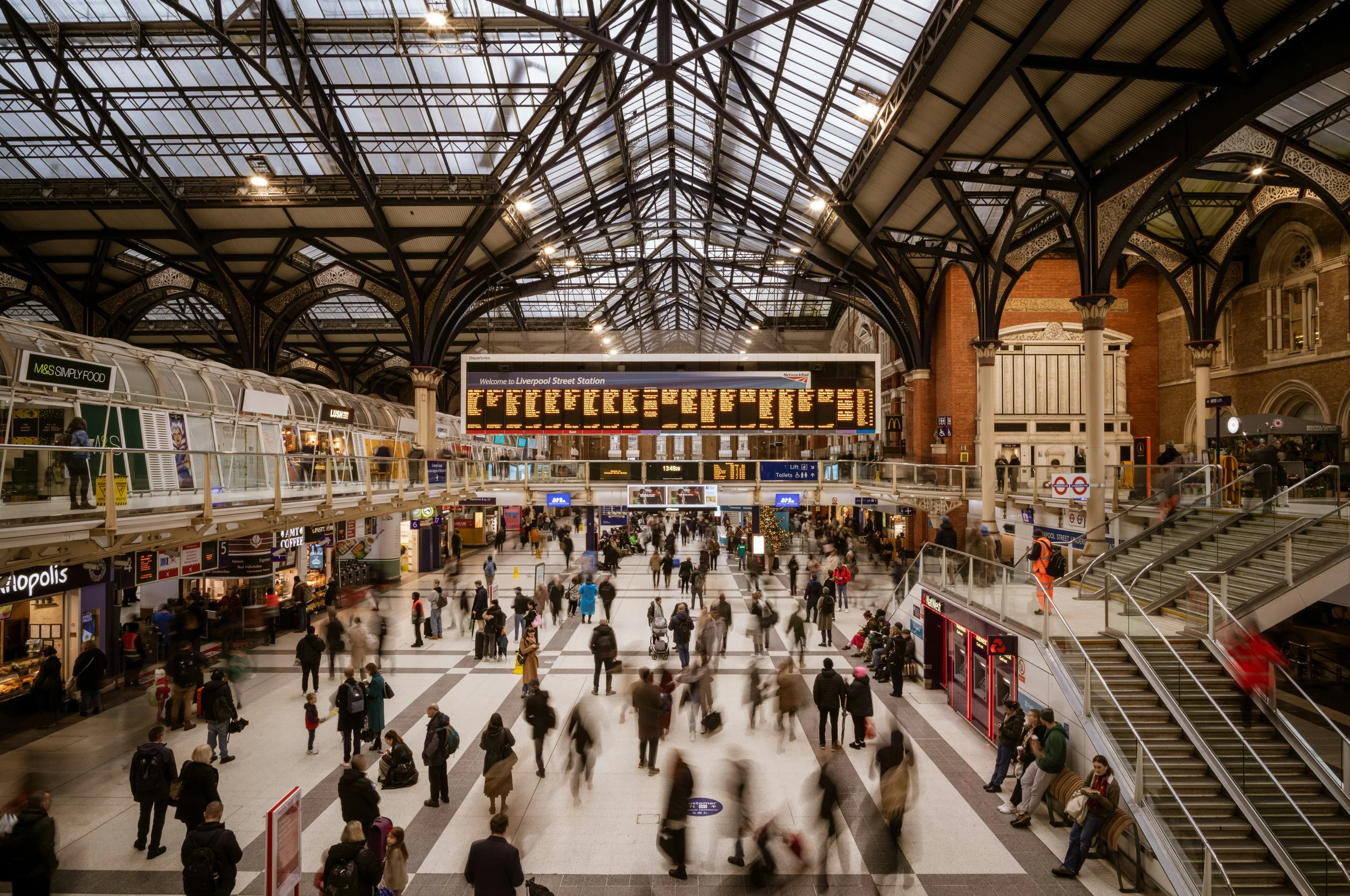Terminal vision: Making transport hubs world-class destinations
Confirming in May that plans for a new London Liverpool Street train station had finally been approved, Network Rail hailed the “bold and collaborative vision” guiding it on.
Among the ambitions for the £1 billion project: to “future-proof” Liverpool Street, ensuring that the station becomes an “accessible, inclusive, world-class multi-modal transport gateway to the heart of London” and a “destination in its own right”.
There’s no doubting the potential, nor the aspiration.
Think about the difference between your train journey home from work and how you feel travelling abroad, either for a business trip or for pleasure…
…Now imagine you’re off to Paris for a long weekend. Think of the different mood. The new mindset.
That difference makes all the difference in the way a well-planned transport hub’s retail space is pitched and designed.
Firstly Liverpool Street is, put simply, a major space in London, encompassing a huge area of prime, urban land ripe for development.
But more to the point, the user numbers are astronomical - some 118 million people currently pass through Liverpool Street each year, rising to an estimated 158 million by 2041. That’s a lot of passengers. But equally as the retail and leisure worlds know, it’s a lot of potential shoppers and diners.
The rewards for developing a London railway station into something that transcends a transport hub don’t need spelling out - just look at what St Pancras has become. But the many intricacies and challenges involved, and the ways it can be done badly, do need discussion.
A lot of it comes down to ambition - too much or not enough - which can make or break a transport hub design.
The underambitious retail pitch plays it ‘safe’ with the same old tenant mix: uninspiring mid-range clothing brands beset by the predictable list of fast-food chains and coffee shops. The result is at best bland, at worst a centre that fails because it doesn’t please anyone. But there is an equal danger of being overambitious. Of pitching way too high and not being realistic.
In both cases the antidote is knowledge, about your space, your passengers, and the way the hub is going deliver for the communities it serves, and to not be fooled by the figures: a huge volume of visitors passing through a train station doesn’t necessarily equate to huge footfall in the retail stores.
Think about the difference between your train journey home from work and how you feel travelling abroad, either for a business trip or for pleasure.
The run home from work usually means arriving at your station and hopping on the next train home, you’re not typically in the mood to stop and shop.
Now imagine you’re off to Paris for a long weekend. Think of the different mood. The new mindset. Arriving nice and early so you’re not rushed. That leisurely coffee and a pastry in that grand setting of St Pancras.
That difference makes all the difference in the way a well-planned transport hub’s retail space is pitched and designed.
Then there are the physical factors that are unique to railway and other transport centres. Chiefly, the layout often dictated by the nature of the transport: the railway tracks and underground lines it sits alongside, or the airport in which it’s situated.
This doesn’t have to be a disadvantage, but it does make it even more vital to get the pitch, design and layout of the commercial space 100% correct.
The tens of thousands of passengers coming and going at Waterloo every day – mostly falling into the arrive-just-in-time rushed commuter category – don’t want to have to go down two escalators to get lunch before they head elsewhere. They want convenience and speed.
And Waterloo raises another big, related issue in transport retail - leakage.
Airport retail spaces have the advantage of zero leakage, because you’re in that area until your gate is called. That sort of captive shopping isn’t possible in train travel, but it is possible to design a station complex in a way that limits the leakage, especially if you serve long-distance travellers who are willing to spend a good couple of hours in situ.
Of course, shopping is only one aspect of a transport hub. Waterloo might not have the perfect retail pitch, but it has excelled as a night time destination, boosted by the presence, in The Sidings, of a truly enormous and successful Brewdog bar. (It’s even been described as “The Only Station Where You Can Do A Proper Pub Crawl” in London.)
Wherein lies another potential advantage of a transport hub. People who live or work in far-flung areas of a large city and need a good central gathering point could choose a large station for their meet-ups - if the offer is good enough. The transport ceases to be the thing delivering passing trade, and becomes the means to bring customers to your cafes, restaurants and bars from all over the city.
These are some but by no means all of the unique intricacies and nuances of transport retail. It’s a complex business, far beyond simple footfall numbers.
Network Rail wants to be bold in its redevelopment of Liverpool Street. So they should be. But boldness and ambition must be guided by core commercial principles, and by intelligence-led design. Get that right, and the potential is virtually limitless.
Article by Thomas Rose, Co-founder, P-Three

